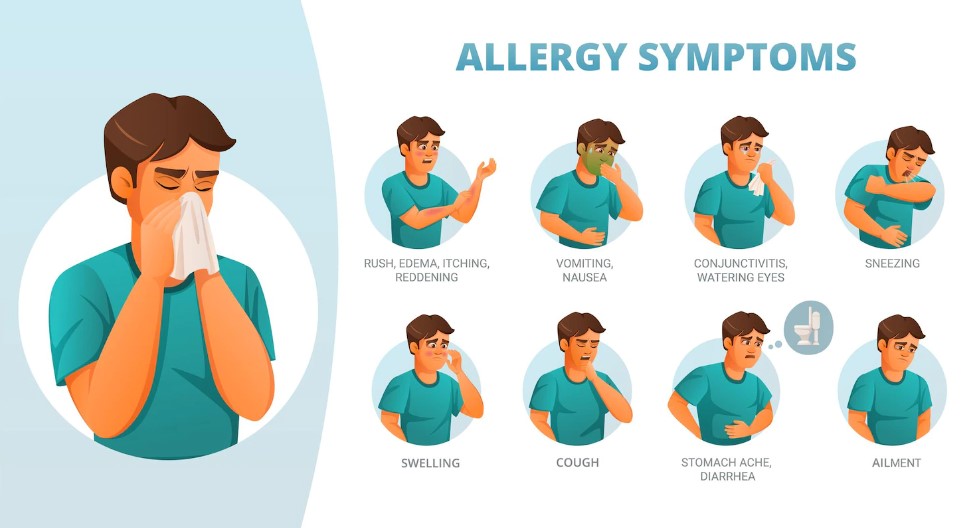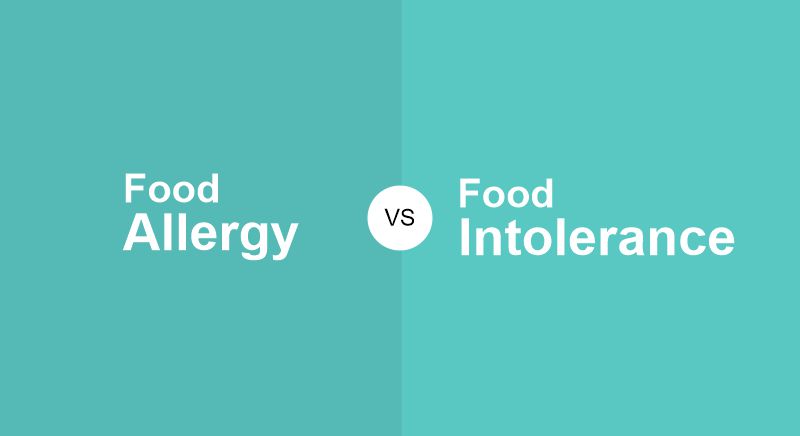Food allergies and food intolerances are two different things. But if you’re confused about the difference between them, don’t worry: You aren’t alone! Many people confuse food allergies with food intolerance, causing them to take unnecessary precautions when eating certain foods.
In this article, we’ll explain the difference between these two reactions to certain foods to understand which type of reaction you may be experiencing. Then we will outline how these reactions are diagnosed and treated so that you can return to enjoying your favorite foods without worrying about any adverse reactions.
Food allergy

A food allergy is an abnormal response of the immune system to a specific food. The immune system fights off foreign invaders, such as viruses, bacteria, and parasites. Foods eaten don’t cause an immune response because they are part of our bodies and are not harmful.
However, when someone is allergic to a particular food or group of foods (such as peanuts or shellfish), their immune system treats them like foreign invaders and produces antibodies against them. These antibodies may trigger symptoms such as hives, rashes, swelling, or itching in the mouth from eating the offending food; sometimes, even vomiting can occur just by smelling some ingredients!
Food intolerance
Food intolerance is not the same thing as a food allergy. Food intolerance is the inability to digest a specific food. In contrast, food allergies are an immune system reaction to certain foods—not all responses to allergens result in immediate symptoms of anaphylaxis (e.g., hives), and some people may experience no symptoms at all.
Food intolerances can be caused by many things: problems with enzymes that break down food into smaller components, a low stomach acid level, or simply not having enough of the enzyme your body needs for digestion.
The most common type of digestive distress is lactose intolerance, which occurs when your body cannot produce enough lactase (the enzyme required to break down the sugar in dairy products). This lack of digestive ability prevents you from breaking down lactose-containing foods like milk and cheese into smaller sugars that your body can absorb without discomfort.
Symptoms
The symptoms of food allergy and food intolerance are similar but differ in severity.
- Food allergy: The symptoms can be severe and even result in life-threatening anaphylaxis (a sudden, rapid drop in blood pressure). In addition to the gastrointestinal symptoms that accompany most food allergies, such as nausea or vomiting, a person who suffers from a severe allergic reaction may experience breathing problems or a skin rash. Those with peanut allergies may have swelling inside the mouth or throat, known as angioedema.
- Food intolerance: Food intolerance is all about adverse responses of the body’s immune system towards specific foods and these responses reflect different kinds of symptoms like headache, vomit, swelling, hair fall, weakness, migraine, nausea, asthma and much more. Since the response comes from the digestive system and is dependent on formation of immune-complexes and inflammatory sequences then after, the reaction is slower and takes a lot longer to reflect, unlike food allergy.
Food intolerance symptoms are generally a delayed reaction and not catastrophic but can still have a greater impact on your daily chores.
For an instance, you have intolerance towards wheat which you are completely unaware of and had any wheat product like a burger, whole wheat sandwich or some other wheat product; your body will reflect the symptoms of swelling, migraine or maybe less appetite and these symptoms will be reflected over the course of days or even weeks in certain cases.
Diagnosis
Your doctor makes the diagnosis of a food allergy or intolerance. To diagnose the cause of the symptoms, the doctor you will consult will ask about your medical and family history, including any other diseases you may have. They will also perform a physical exam and order to run blood tests on you to rule out other conditions that might be causing similar symptoms. Some blood tests can determine whether you have an allergy to certain foods.
Food allergies and intolerances both cause gastrointestinal symptoms like bloating and diarrhea. But usually do not result in serious health problems except those associated with food allergies such as anaphylaxis. Anaphylaxis requires immediate medical attention by administering epinephrine shots.
Conclusion
That concludes our discussion of the distinction between food intolerance and allergy. Your immune system responds to a specific food or beverage when you have a food allergy. Sneezing, wheezing, or throat swelling are just a few of the symptoms that might result from this response. Your immune system is not involved in food intolerance, which can result in symptoms like nausea, bloating, and vomiting but has impact on your daily chores and may lead to serious health issues later.

